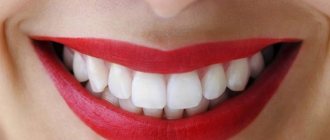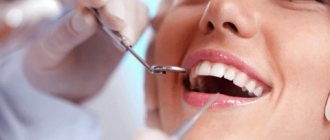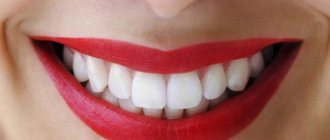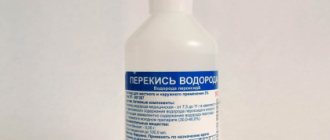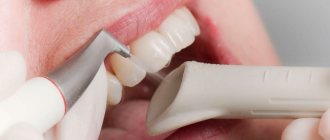- Causes of gum sensitivity Vigorously brushing teeth
- Changes in hormone levels
- Irritation from dental plaque
- Gingivitis
- Toothpastes
When inflammatory processes occur, the gums become red, itchy, and swollen.
Many people believe that these symptoms will go away over time and think that everything is fine. But if you start the problem of gum sensitivity, you can face more serious consequences. We tell you how to deal with sensitive gums at home, when to go to the dentist and what to choose for daily care.
Causes of gum sensitivity
The most common reasons include signs of disease and characteristics of the body or brushing teeth. Let's highlight the three most popular reasons.
Vigorous teeth brushing
Many people believe that in order to get a good cleaning, you need to press harder on the brush. And it’s even better if this brush has stiff bristles and the abrasiveness index of the paste is maximum. But if you are prone to sensitivity, this approach is especially harmful.
For thorough cleaning, soft bristles and low-abrasive paste are sufficient. And the cleaning technique does not have to be intensive. We wrote more about the techniques in the article “How to properly brush your teeth with a manual brush.”
Changes in hormone levels
Increased sensitivity of the gums is often observed in diseases of the endocrine and nervous systems, as well as in women during pregnancy. Changes in hormone levels lead to a deterioration in the blood supply to the mucous membrane. In addition, the number of bacteria in the oral cavity increases, and the enamel does not receive enough minerals.
Irritation from dental plaque
Irritation of dentin tissue is natural during the formation of dental plaque - a formation that can create an acidic environment in the oral cavity. Plaque is a mixture of bacteria, food debris, saliva and mucus with calcium and phosphate salts.
Poor hygiene leads to plaque accumulation, which pushes the gum away from the tooth. This causes redness and irritation of the gums. And subsequently gingivitis and even periodontitis.
Cleaning hard to reach places
For high-quality and effective teeth cleaning, one toothbrush and toothpaste are not enough. How can you clean hard-to-reach places so that plaque does not gradually accumulate there?
To minimize the risk of dental caries in adults and maintain dental health, it is necessary to thoroughly brush your teeth twice a day. And in general everything seems clear, but how can you clean hard-to-reach places so that plaque doesn’t gradually accumulate there? Today, a dental hygienist from the CrocoDent clinic talks about this.
For high-quality and effective teeth cleaning, one toothbrush and toothpaste are not enough. Your smile can remain healthy if you take proper care of it. Our toothbrush can only handle three of the five surfaces - external (vestibular), internal (lingual/palatal) and chewing. There are also contact surfaces, each tooth has two of them. This is where your brush is powerless.
Interdental spaces are the most difficult to reach surfaces; plaque also accumulates in them and they require proper care. For high-quality care of the interdental space, we recommend using special brushes. They help effectively cope with plaque on the contact surfaces of teeth without damaging the enamel and gums. Interdental brushes vary in size, so please consult your hygienist before using them. Your dentist will measure the space between your teeth and suggest brushes that are the right size for you. It is enough to use the brush once a day.
Finish the brushing process with a mono-tuft brush. It allows you to clean each tooth with maximum quality in hard-to-reach places where a regular brush cannot reach. The use of a monotuft brush is permissible without toothpaste. It is better to use this brush twice a day - morning and evening.
Let an irrigator become an obligatory attribute of your daily hygiene. An irrigator is a device that delivers a powerful stream of water that can easily clean out food debris and plaque from the interdental spaces. In addition, a stream of water will provide a gum massage, which strengthens the walls of blood vessels, improves blood circulation and metabolism in the gums. We recommend using the irrigator 2 times a day.
Therefore, do not be afraid to slightly expand your range of oral care products, this will help you brush your teeth better and keep them healthy.
If you are in doubt about choosing a particular product, consult your dentist. Return to list of articles
Types of inflammatory gum diseases
We looked at the reasons that are not related to diseases. Now let's talk about what types of inflammations you should go to the doctor for. These include the three most common diseases: gingivitis, periodontitis and periodontal disease. Let's look at each of them in more detail.
Gingivitis
Gingivitis is an inflammation of the dentin tissue around a specific tooth. It occurs in both chronic and acute forms. The inflammatory process manifests itself only on the gums, without affecting the tooth tissue. Therefore, it is quite simple to cope with gingivitis before it progresses to the stage of periodontitis.
Periodontitis
Periodontitis is the inflammation of the tooth tissues that support it. This tissue is located between the root of the tooth and the jaw bone. The disease gradually moves the gum away from the tooth, forming a gum pocket. In other words, the gums expose the teeth, and they become sensitive. Food gets clogged into the gum pockets, pus appears in the acute phase, and the teeth gradually become loose and shift.
Inflammatory diseases are easy to distinguish by visual examination: with gingivitis - only redness and swelling, with periodontitis - also receding gums
Research results
Current research indicates a slight advantage to electric toothbrushes. Adults and children who used a power brush to clean their mouths showed an 11 percent reduction in plaque on their teeth and were less likely to experience gingivitis and other gum diseases than people who used a manual toothbrush.
Additionally, the researchers found that brushes with small round heads that spin quickly in one direction and then the other did a slightly better job of removing plaque than brushes with oval heads that move quickly or vibrate from side to side. But the study authors say more research is needed to confirm these results.
Another study found that using an electric toothbrush reduced the progression of periodontal disease. Additionally, power toothbrush users had healthier gums overall and 19 percent more teeth over the study period than those who used manual brushes.
However, you can effectively brush your teeth with a regular manual toothbrush.
What symptoms indicate inflammatory processes?
We have looked at the main reasons why gums become inflamed and bleed. But how to deal with the symptoms? What exactly indicates the disease until the gums begin to bleed and become swollen?
In addition to insufficient oral hygiene, inflammation can be caused by untimely treatment of pulpitis, the formation of tartar along the gum line, as well as fillings and crowns with an overhanging edge.
Symptoms include:
- pain when pressed or touched;
- bad breath;
- itching and redness around the tooth;
- discomfort when biting food;
- loosening of teeth.
What is an interdental irrigator?
This is a convenient device for effective oral hygiene. With the help of the Waterpik irrigator, the standard teeth cleaning procedure moves to a higher quality level, similar to a professional service in a dentist's office.
The device consists of a hydraulic pump (compressor), a reservoir for flushing fluid and a handle on which the nozzles are attached. When turned on, the compressor creates pressure, creating a powerful pulsating jet of water. Through the nozzle, it gets into the interdental crevices and easily washes out plaque and food debris from them.
Waterpik irrigators are stationary and portable. Devices with a built-in charging battery are compact in size and can be taken with you to work or on the road. This is especially convenient for those who wear braces. Stationary devices are connected to the electrical network, they are large in size and have a large tank.
Treatment and care for sensitive gums
Inflammatory gum diseases in adults and children do not arise out of nowhere. Sometimes it can take from 1.5 to 15 years for serious consequences to occur. But the first symptoms of inflammation, which we have already described, signal that it is worth at least choosing the necessary care and taking preventive measures.
In this section we will talk about products for daily care for bleeding and inflammation of the gums.
Toothpastes
Regardless of the cause of the bleeding, the first thing to look at is your toothpaste. During exacerbations, it needs to be changed to one that heals the mucous membrane and relieves inflammation.
To relieve gum sensitivity, choose pastes containing chlorhexidine, plant extracts (oak bark, sage, chamomile), allantoin, and essential oils (menthol, thymol). To pair with the paste, choose a brush with soft bristles. And don't forget to change it every 3 months. Complete your care with a rinse for sensitive gums.
Often, for gum inflammation, dentists recommend three types of pastes.
- With chlorhexidine - relieve inflammation and swelling, help restore soft tissue.
- With antioxidants - reduce pain, improve blood circulation in the gums.
- With herbs - protect soft tissues from irritation, help in the healing of ulcers, erosions and open wounds.
Apadent Perio toothpaste (90 gr)
Toothpaste Biorepair Gum Protection Gum Protection 75 ml
Dentissimo PRO-care toothpaste Protecting teeth and gums
Dentaid Perio-Aid tooth gel paste with chlorhexidine 0.12%
Rinse aids
To rinse sensitive gums, you should choose anti-inflammatory balms and rinses. They contain substances necessary to relieve inflammation and prevent the proliferation of pathogenic bacteria:
- amino acids;
- xylitol;
- chlorhexidine;
- hydroxyapatite and other components.
Dentaid Perio-aid Active control with chlorhexidine 0.05%
Waterdent mouthwash Chlorhexidine
Anti-inflammatory balm Vivax
Biorepair Mouthwash Gum Protection 500 ml
These balms can also be used to rinse sensitive gums after tooth extraction.
Local treatment: ointments, gels, collagen plates
Local treatment agents have a pronounced hemostatic, anti-inflammatory and healing effect. By applying the gel or plate to the site of inflammation, you will get a positive result the very next day. In the composition of the products you will find everything you need for healing and relieving inflammation:
- chlorhexidine;
- herbal extracts;
- amino acid complexes;
- biooxidants;
- collagens.
Farmadont II collagen plates for painful and sensitive gums...
Elugel gum gel
Tooth gel Pierre Fabre Parodium
Vivax anti-inflammatory tooth gel
Briefly about professional help
We've sorted out the home care products. Now we’ll tell you how gum sensitivity is treated and cared for in the dentist’s office. The choice of care depends on the degree of neglect and symptoms. In some cases, hygienic cleaning is necessary, and in case of serious consequences, physical therapy and a visit to a dental surgeon cannot be avoided.
- Ultrasonic hygienic cleaning allows you to remove plaque, microbial film and hard deposits without harming inflamed gums. This method has contraindications: asthma, heart failure, diabetes, postoperative period.
- Physiotherapy is an additional method for anti-inflammatory local therapy, which is most effective at the stages of gingivitis and periodontitis. Physiotherapy includes darsonvalization (microcurrent), massage and vacuum therapy. These types of treatments are aimed at strengthening dentin tissue.
- Surgical intervention is a last resort in the treatment of inflammatory processes of the gums. They resort to it when a person develops dental pockets and the tooth becomes very loose.
Algorithm for the standard method of brushing teeth:
1. Divide the dentition into several segments: molars, premolars, anterior teeth.
2. Place the brush at an angle of 45 degrees to the surface of the teeth (dentitions are open).
3. Brush the teeth from the vestibular surface of the upper jaw on the left, performing 10 sweeping movements from top to bottom with the brush, then move on to all other segments.
4. Brush the teeth from the palatal surface of the upper teeth, moving in segments from left to right, making 10 sweeping movements on each one.
5. Brush the teeth of the lower jaw in the same sequence.
6. Brush all surfaces of the teeth with brush movements back and forth, 10 movements per surface.
7. Finish brushing your teeth with circular movements along the vestibular surface, grasping the teeth and gums.
Note. When performing sweeping movements with a brush, it is first placed at an acute angle from the surface to be cleaned, and then the brush is turned along its axis. During reciprocating movements, the brush is placed perpendicular to the surface to be cleaned. On the upper jaw, when cleaning the palatal surface of the front teeth, the toothbrush is placed with the handle down, and on the lower jaw, when cleaning the lingual surface, it is positioned upward. If the sequence of movements with a toothbrush is violated, plaque can be transferred into the interdental spaces.
Prevention of gum inflammation
Unpleasant symptoms of inflammatory processes can be avoided. With proper prevention and in the absence of diseases, it is enough to follow basic measures.
- Brush your teeth thoroughly every day with a manual or electric brush for sensitive gums, use dental floss and an irrigator.
- Create a balanced diet - do not abuse sweets, flour and sour foods, increase the amount of vegetables and fruits.
- To refuse from bad habits.
- Using rinses and balms will reduce the number of pathogenic bacteria in the mouth.
- Visit the dentist regularly, at least once every 6 months.

